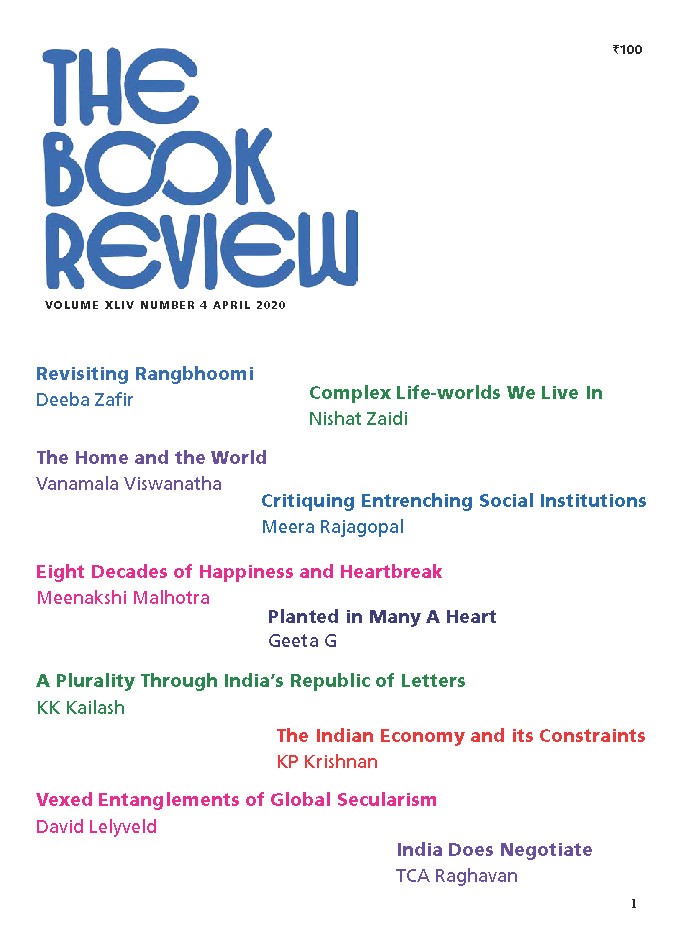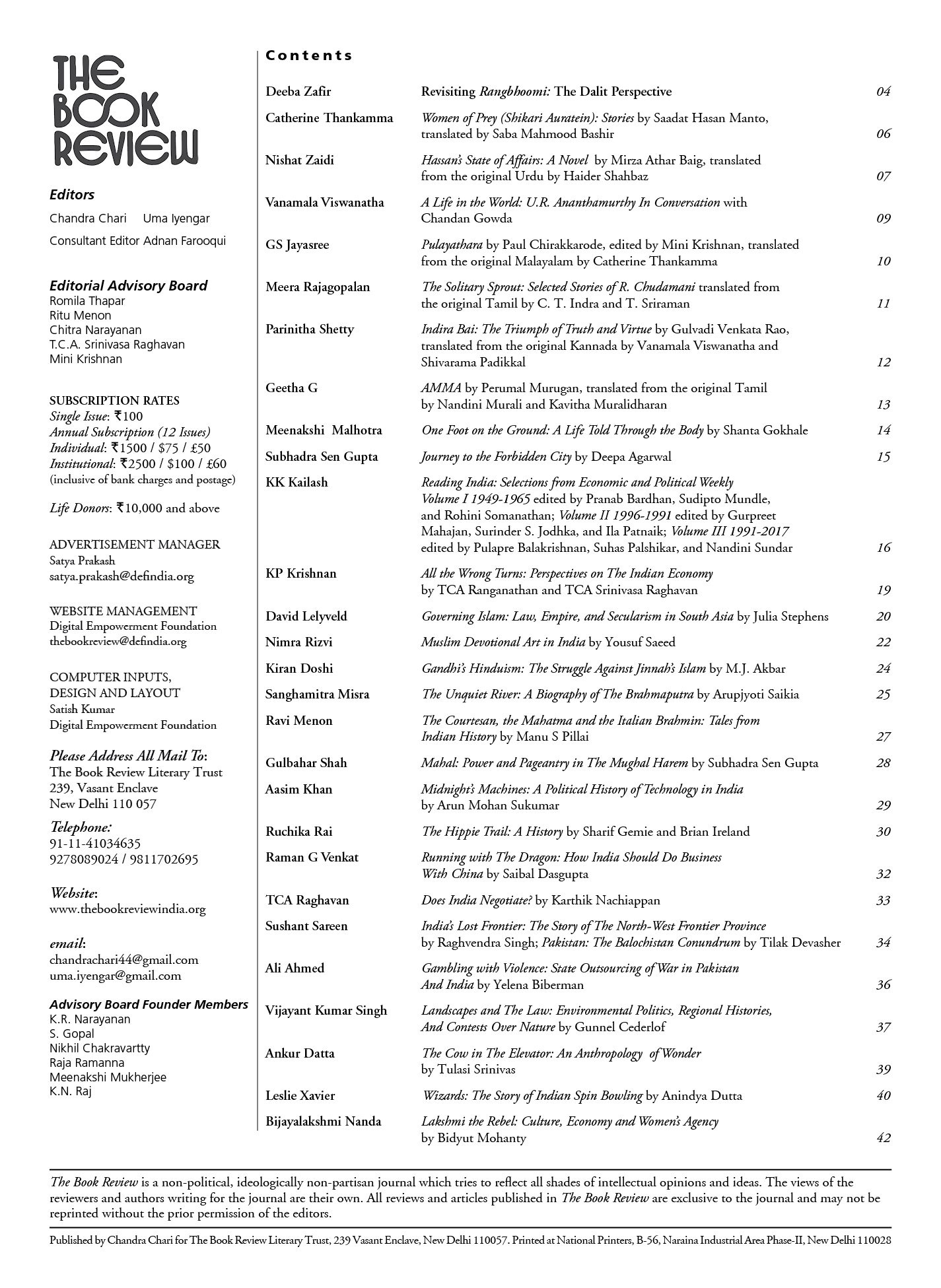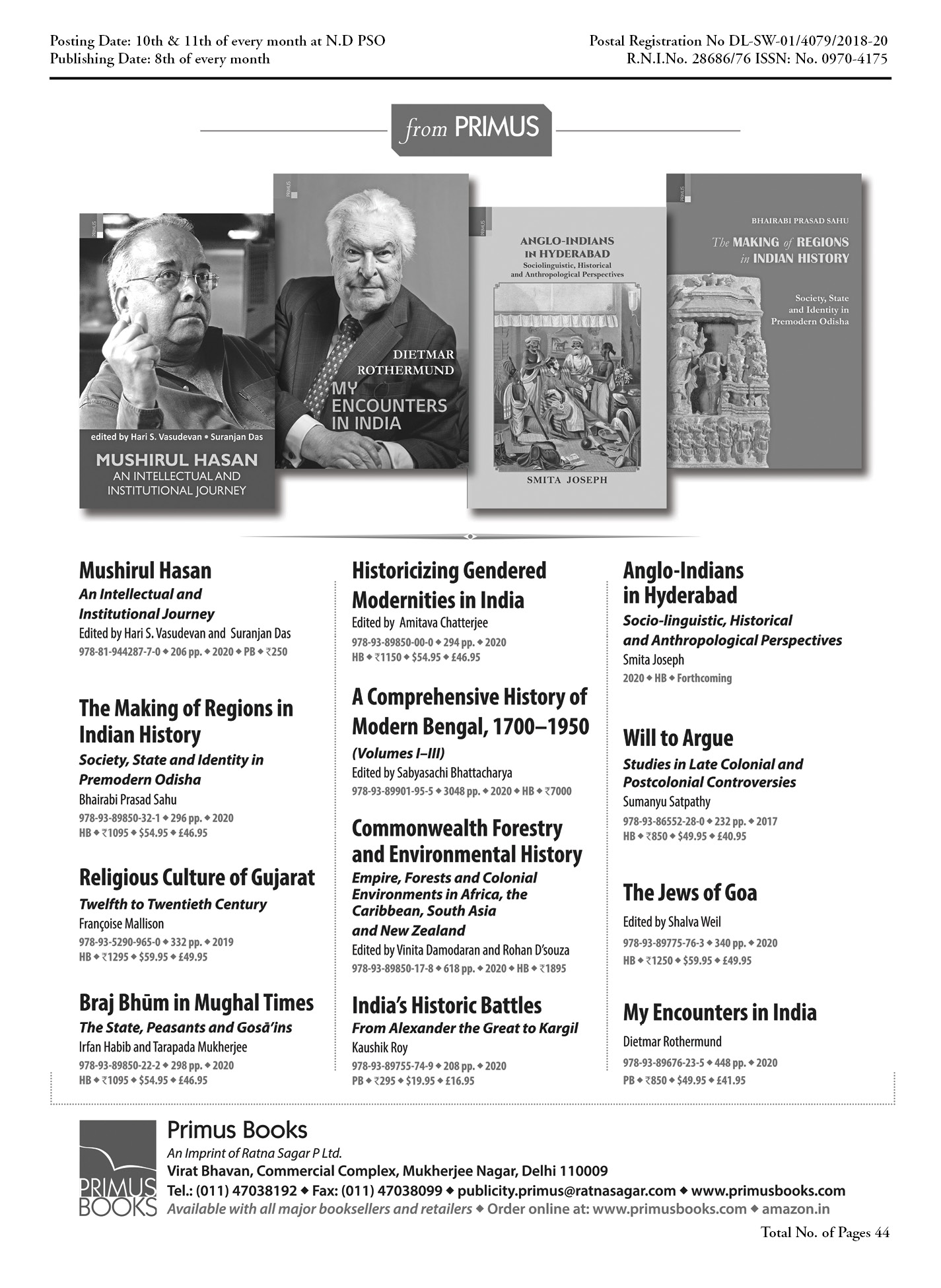Premchand occupies an iconic status in the Hindi literary sphere as the foundational figure of modern Hindi fiction. He is seen as the exponent of realism, whose works have been considered not only to have democratized the literary domain by including those who.
Capitalized SAADAT HASAN MANTO, printed against strands of jet black hair that have escaped the floral edge of a burqa, which reveals more than it conceals; arched eyebrows, large and thickly kohl-lined eyes, the partial tantalizing glimpse of painted lips.
Urdu fiction is mostly known for its realist, humanist approach. Even in its most experimental incarnations, Urdu writers did not make any radical break from the modernist aesthetics. Mirza Athar Baig, a revolutionary in this sense, has been hailed as a pathbreaker who with each.
After Tagore and Premchand, if one can think of a literary figure who has had a national reach in India, it is UR Ananthamurthy (1932-2014). URA was no doubt the most influential Kannada writer of his times. But he was, equally, an inspiring teacher, creative administrator.
Pulayathara was published in the year 1962. It was the first novel in Malayalam to give a graphic description of the Dalit Christian condition. The novel was largely ignored by the reading public and critical establishments. However, the scorching issues of land, labour and faith that the book sought to project, continue to haunt millions.
The Solitary Sprout is a treat to read. This will come as no surprise to those familiar with Chudamani’s books. Like the others, this book contains no violence or sex, preaches no doctrine, upholds no morals……just twenty simple tales of the everyday life of mostly Tamilian families.
The first Kannada novel, Indira Bai or The Triumph of Truth and Virtue, has been recently translated into English, for the second time, by Vanamala Viswanatha and Shivarama Padikkal. Originally published by the Basel Mission Press, Mangalore, in 1899 the novel was first translated into English.
‘I was my mother’s boy.’ ‘Amma took this shy, introverted child by hand and pushed him out into the world.’‘I was forty-six the year Amma died. Even today, I inhabit the world she created in those forty-six years with me.’
In November 2019, the Tata Literature Live Festival, held in Mumbai, conferred a lifetime achievement award upon Shanta Gokhale, recognizing and acknowledging her long and distinguished career. Reading her delightful memoir, we can understand.
We know a lot about the British who explored and mapped India in the nineteenth century, with a scientific rigour that Indians have never possessed. As a matter of fact, till the Mughal time geography was not even taught in schools and we were too scared of losing.
As our Republic turns 70, there is a distinct anti-intellectual wind blowing in the air, by which I mean not merely a certain wariness often bordering on suspicion of ideas but outright disrespect for ideas that are not popular. Ideas that question or point to flaws.
All the Wrong Turns: Perspectives on the Indian Economy</em> by TCA Ranganathan and TCA Srinivasa Raghavan, two highly regarded and respected professionals, one a lifelong banker and the other an economic journalist, is a welcome addition to the growing commentary on.
The current manouevres by the Indian government to define civic status in terms of religious identity have deep roots in the legal regimes introduced under British colonial rule. If implementation of the new Citizenship (Amendment) Act will require applicants.
Muslim Devotional Art in India explores the rather wide arc of the growth, spread, and ever so dynamic forms of Islamic religious art in India by bringing together a wide range of sources and methodologies in six sections. While Islamic art in India has traditionally drawn upon Central Asian imagery.
MJ Akbar needs no introduction. A famous journalist and politician (BJP), he is also a prolific writer. His latest offering, its unwieldy and somewhat misleading title notwithstanding, is about the last phase of India’s freedom struggle. The struggle for freedom was never between Hinduism and Islam.
The Unquiet River, by a historian who has chronicled several aspects of the history of modern Assam, comes adorned with weighty academic endorsements which recommend it as an unparalleled environmental and social history of the Brahmaputra, singular in its historical depth and magisterial sweep.
Today history is being reinterpreted if not rewritten—mainly by those who would prefer India to melt into a single religious identity. But historical events and historical figures cannot be understood, let alone judged, in isolation. This can happen only.
It could be argued that recent discourse in the Indian socio-political milieu suggests a movement towards narratives that favour a particular interpretation of history at the expense of others, in order to further a specific ideological agenda.
This is a remarkable book, a sweeping political history of technology written by a scholar who is also adept at dispensing insights for those working in public policy. In Midnight’s Machines, we have ample evidence that its author Arun Mohan Sukumar has an impressive capacity to read documents.
The Hippie Trail: A History by Gemie and Ireland charts the experiences of travellers as well as the socio-cultural contexts of destinations that became a part of the hippie trail between the 1950s and 1970s, through themes that throw light on the socio-cultural as well as ‘inner’ experiences of the travellers.
India and China are two of the four ancient world civilizations. Historically, Indian cultural and trade linkages have significantly influenced Chinese history. Since Indian Independence and Chinese ‘liberation’ in the middle of the twentieth century, both nations have failed to build on this legacy.
Does India Negotiate? Most in India and especially those with interest in Indian foreign policy will question the validity of the question and wonder why the author is pushing at an open door. The book is however not so much directed at an Indian as it is at a western and affiliated.
At the height of their power, the Marathas had extended their sway right up to Attock, the proverbial gateway to Hindustan located on the east bank of the river Indus. They had, however, no intention of crossing the Indus because they believed that the river was the historical, cultural and even.
The book is an outcome of the dissertation of the author Yelena Biberman, at Brown University, under the tutelage of Professor Ashutosh Varshney. Varshney is also series editor of the Modern South Asia series of which the book is the fifth product.
Early colonial period has been subjected to a multitude of case studies, focusing upon the interaction between the indigenous colonized spaces and the evolving, interventionist and the homogenizing colonial state. Ramachandra Guha’s and Madhav Gadgil’s.
In the novel Nights at the Circus, set at the end of the 19th century in Western Europe, Angela Carter writes: ‘In a secular age an authentic miracle must purport to be a hoax in order to gain credit in the world’ (1994: 16). Carter’s novel, which follows a colourful group of characters travelling from.
A friend, who trained at the National Cricket Academy (NCA) in Bengaluru, once reminisced about an interesting tussle he had at the academy nets. A right-handed batsman, he was receiving hard lessons on the perils of spin bowling. He began with a cover.
Bidyut Mahanty’s <em>Lakshmi the Rebel: Culture, Economy and Women’s Agency </em>is an attempt to examine the status of women in society by exploring the links between history, political economy, culture and region in India. The uncertainties and the complexities of the narratives.
































